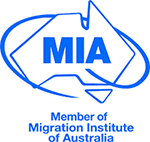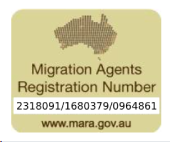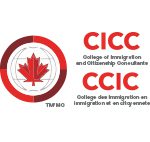Planning a trip to Ireland? Whether it’s to explore its scenic landscapes, experience its culture, or visit family and friends, the Ireland Tourist Visa is the key entry route for short stays. This guide provides a clear overview of the process, requirements, and important details to help you prepare for your journey.
The Ireland Tourist Visa, officially classified as a Short-Stay “C” Visa, is issued by Irish immigration authorities to travelers from visa-required countries. It allows visitors to stay in Ireland for up to 90 days for purposes such as tourism, visiting family or friends, short business activities, or medical treatment. This visa is strictly for temporary stays and does not permit employment, access to public services, or residence beyond the approved duration.
Whether you need a visa to travel to Ireland depends on your nationality and the visa-policy schedules in place. Many nationalities are visa-exempt for short stays of up to 90 days, while others must apply for a Short-Stay “C” visa before travelling. It is important to note that Ireland is not part of the Schengen Area, so a Schengen visa does not grant entry to Ireland.
Nationals of visa-exempt countries can enter Ireland without applying for a visa in advance, usually for short visits of up to 90 days. The official list of visa and non-visa required nationalities is maintained by the Irish immigration authorities and is updated regularly.
| Category | Description | Example Countries |
| Visa-Exempt / Visa-Free Entry | Nationals of many countries do not need to obtain an Irish visa for short stays of up to 90 days. | Citizens of EU, EEA, Switzerland, and other visa-exempt states. |
| Visa-Required Countries | Nationals from these countries must apply for a Short-Stay “C” visa before travelling. | Countries listed under the Irish “Visa Required Nationalities” schedule. |
| Short-Stay Visa Waiver Programme | Nationals of certain countries holding a valid UK short-stay visa may enter Ireland without a separate Irish visa if conditions are met. | Includes countries such as India, China, Turkey, Saudi Arabia, and the Philippines. |
| British-Irish Visa Scheme (BIVS) | Allows eligible Indian and Chinese nationals with a UK visa endorsed “BIVS” to travel between the UK and Ireland on the same visa. | Applicable only to specific visa types under the scheme. |
Ireland classifies nationalities under specific schedules. For example, Schedule 1 lists countries that do not require a visa for short visits. Other schedules outline which nationalities are subject to visa requirements or may benefit from exemptions and waivers.
The Ireland Tourist Visa, also known as the Short-Stay “C” Visa, is generally issued for stays of up to 90 days within any 180-day period. This time limit applies whether the purpose of the visit is tourism, family visits, or short business activities, and overstaying beyond the approved period is not permitted.
A single-entry visa allows you to enter Ireland once during the validity of your visa. If you leave the country, you will need a new visa to return, unless a multiple-entry visa has been granted.
A multiple-entry visa may be granted in specific circumstances, usually for applicants who have a clear travel history with Ireland, need to travel frequently, or are making onward journeys that require re-entry. This type of visa allows you to leave and re-enter Ireland multiple times during the validity period, provided the total stay does not exceed 90 days in any 180-day window.
When applying for an Ireland Tourist Visa (Short-Stay “C” Visa), you must prepare a full set of documents to support your application. These demonstrate the purpose of your visit, financial stability, and assurance that you will return home after your stay.
| Requirement | Details |
| Passport Validity | A valid passport with at least 6 months’ validity beyond your planned stay in Ireland. Include copies of previous passports and visas, if any. |
| Photographs | Recent passport-sized color photos that meet official Irish visa photo guidelines. |
| Proof of Finances | Bank statements for the past 6 months, showing sufficient funds to cover your stay. Employment letters or payslips may also be requested. |
| Accommodation Bookings | Confirmed hotel reservations, rental agreements, or proof of other accommodation. If staying with family or friends, provide an invitation letter with their contact details. |
| Travel Itinerary / Invitation | A clear travel plan with return flight bookings. If visiting relatives or friends, an official invitation letter with proof of their residence in Ireland. |
| Other Supporting Documents | Travel insurance valid for the duration of your trip, a return or onward ticket, and additional documents depending on your situation (e.g., employment or student status). |
Applying for an Ireland Tourist Visa (Short-Stay “C” Visa) involves several stages. Each step must be completed carefully to avoid delays or refusals.
Step 1: Complete the Online Application
Step 2: Print and Sign the Application Summary
Step 3: Gather Required Documents
Collect all necessary documents, such as your valid passport, photographs, financial evidence, accommodation details, travel itinerary, and invitation letters (if applicable).
Step 4: Pay the Visa Fee
Pay the applicable visa fee (single-entry or multiple-entry), as instructed by the embassy, consulate, or visa office handling your application.
Step 5: Submit Your Application
Submit your signed summary form, payment receipt, and all supporting documents to the designated Irish embassy, consulate, or visa application centre in your region.
Step 6: Wait for a Decision
The visa office will process your application. Processing times may vary depending on the volume of applications and individual circumstances.
Step 7: Appeal or Reapply if Refused
If your application is refused, you will receive a written explanation. In most cases, you can appeal the decision within the specified timeframe or submit a fresh application once issues have been addressed.
Visa fees vary depending on whether you apply for a single-entry or multiple-entry visa. Additional costs may also apply for document preparation, translation, or third-party services.
| Visa Type | Fee (EUR) |
| Single-Entry Visa | € 60 |
| Multiple-Entry Visa | € 100 |
Additional Costs to Consider
Note: Visa fees are non-refundable, even if your application is refused.
Processing times for Ireland Tourist Visa applications can vary depending on the applicant’s country of residence and the time of year. The Irish immigration authorities recommend applying well in advance of your intended travel date to allow for any delays.
| Processing Stage | Typical Timeframe |
| Average Processing Time | Around 6–8 weeks from the date your application and documents are received |
| Peak Season Applications | May take longer during summer months, holidays, or high travel seasons |
| Delays Due to Incomplete Applications | Applications missing documents or information will face delays or possible refusal |
Tips for Applicants
The Ireland Tourist Visa (Short-Stay “C” Visa) is strictly for temporary visits of up to 90 days. It comes with clear conditions that all visitors must follow.
| What You Can Do | What You Cannot Do |
| Visit Ireland for tourism, family visits, or short business activities. | Work or engage in any paid or unpaid employment. |
| Attend short courses or training lasting less than 90 days. | Access public funds, social welfare, or state benefits. |
| Travel within Ireland during the validity of your visa. | Stay beyond the visa expiry date — you must leave before your permission ends. |
| Receive private medical treatment (if documented). | Convert or extend this visa into another type (e.g., work or study visa). |
Holding an Ireland Tourist Visa does not guarantee entry. Final permission to enter the country is decided by an immigration officer at the border. Visitors must be prepared to present documents and answer questions about their stay.
Even with a visa, you may be required to present additional evidence at the border, such as:
Being granted an Ireland Tourist Visa is not automatic. If your application is refused, you will receive a written refusal letter outlining the reasons for the decision. This letter will also explain whether you have the right to appeal.
In cases where the decision is not open to appeal, you may still submit a new visa application at any time, provided you address the issues that led to the refusal.
Note: Common reasons for refusal include insufficient financial proof, weak ties to your home country, missing documents, or doubts about your purpose of visit. Submitting a clear, well-documented application is the best way to avoid refusal.
Y-Axis can guide UK residents through each step of applying for an Ireland Tourist Visa. We offer:
Our Accreditations | |||
 |  |  |  |
If you have a successful application for a Short Stay ‘C’ Visa, you can enter and are required to fulfill the conditions of the visa given below:
No, you cannot visit Northern Ireland with the Short Stay ‘C’ visa. The Ireland Visit Visa does not permit you to enter the UK with an Irish visa.
You are required to have adequate funds to sponsor your trip and stay in Ireland. If someone else is sponsoring your visit, you should provide documents to prove they have the funds required to pay for your trip.
There is no specified amount of funds required to qualify for the Short-Stay ‘C’ visa.
Ireland operates a Short-Stay Visa Waiver Programme, which allows certain nationals holding a valid UK short-stay visa to travel to Ireland without applying for a separate Irish visa. This programme applies only to eligible nationalities and requires that the person has first entered the UK lawfully using their UK visa. The permitted stay in Ireland under this scheme is up to 90 days or until the UK visa expires, whichever comes sooner. Additionally, the British-Irish Visa Scheme allows Chinese and Indian nationals with specific UK or Irish short-stay visas to travel freely between both countries.
A Short-Stay “C” Visa allows you to stay in Ireland for a maximum of 90 days. This period is fixed and cannot be extended beyond the permitted duration. The visa is intended only for temporary visits, such as tourism, short courses, family visits, or business trips. If you need to stay longer, you must apply for the appropriate long-stay “D” visa or residence permission before travelling. Travellers entering under the Short-Stay Visa Waiver Programme must also respect the rule that the stay in Ireland cannot exceed either 90 days or the validity remaining on their UK visa.
To apply for an Ireland Short-Stay “C” Tourist Visa, you generally need the following:
You can travel to Ireland without a separate visa if you are an Indian or Chinese national holding a UK visitor visa that qualifies under the British Irish Visa Scheme (BIVS), but you must first enter the UK on your valid visa before going to Ireland. You cannot use this scheme if your UK visa is not eligible or if you are from another nationality, in which case you must apply for a separate Irish visa to visit Ireland.
You can visit Ireland without a separate visa if you hold a valid UK residence permit and are from a country eligible under the British Irish Visa Scheme (BIVS). However, to use this scheme, you must first enter the UK on your valid residence permit before travelling to Ireland. If your nationality or UK permit does not qualify under BIVS, you will need to apply for a separate Irish visa to visit Ireland.
Yes, Indian and Chinese nationals can potentially use one visa for both Ireland and the UK through the British Irish Visa Scheme (BIVS) for short stays, provided their visa is BIVS-endorsed and the trip begins in the country that issued the visa. This allows for travel within the Common Travel Area (which includes both the UK and Ireland) without needing a separate visa for the second country, though certain visa types (like visitor in transit or work/study visas) are excluded.
Here are some of the rules for British citizens visiting Ireland:
For a short visit to Ireland, you need a Short Stay “C” Visa.